AMD FX-9590 Processor Review: Brute Almighty
Final Thoughts about the FX-9590
AMD’s current value proposition with their Vishera processors is as an alternative to Intel’s mainstream desktop offerings. Despite the FX moniker and even with the highly clocked FX-9590, the recent price drops reflect a much more realistic and competitive assessment of their rival’s position. It is not a mystery as to why a release of refreshed FX processors and price drops are necessary now so deep into 2014 although Intel’s recent rehash of their Haswell desktop parts with the Devil’s Canyon release softens the blow somewhat from AMD’s perspective. The more unnerving thing for users and AMD fans is perhaps the lack of a clear roadmap after this for the FX line.
Realistically, it is not strictly the performance that people are giving up with the aged AM3+ platform. In fact after seeing the tests, I am thoroughly convinced that it is still a viable platform to build a new system on, even for gaming. It does not have native PCI-E 3.0 support but PCI-E 3.0 support is largely baloney and inflated marketing pushed forward by motherboard manufacturers and disappointingly, even many reviewers. As tests have shown, not even current top end video cards can saturate the bandwidth close enough to warrant a performance gap between PCI-E 3.0 and PCI-E 2.0. PCI-E 3.0 itself would be amazing for storage but most PCI-E SSDs in the market and newly released ones from OCZ and Samsung are still PCI-E 2.0 and do not require more. So why the push for PCI-E 3.0 again? Upgrade potential.
That is the refrain of course and together with its cousin “bottleneck”, the two most currently overused phrases in the computer DIY world today. If anything, AM3+ is the only platform that actually showed true upgradeability especially more than several years after the fact, but it is not exactly lauded for this isn’t it? Truth is, the PC building enthusiast community are hypocrites who cannot admit to ourselves that we want both the ability to upgrade but hate the idea of building on a platform that isn’t the latest. If a platform is actually old enough to require a modular CPU upgrade, it is considered too old and far from cutting edge. For the most part, just the illusion of upgradeability is enough for many enthusiasts and Intel was more than happy to provide that as long as they have the top performance crown. PCI-E 3.0? Great! I have it on my system. I cannot wait until the video card I purchase three years from now can actually saturate it, by then I would have three different motherboards from three future generations forward and possibly PCI-E 4.0 support that no video cards in that time period can take advantage of. Even miniature incremental upgrades such as the addition of an M.2 port is something lapped up because, hey, it is an upgrade.
The AMD 9-series chipset has no native USB 3.0 support but that is easily handled by 3rd party controllers. SATA performance is only slightly slower than Intel’s Z97 chipset (see image below) but it is still far superior to 3rd party SATA6 performance. For those running virtual machines, AMD’s lower cost platform and 8-core CPUs is a boon considering the robust virtualization features available and the money saved can be put to superior upgrades such as memory and storage speed which are actually the more important part in building a virtual machine server. With that said, despite not getting the top score in everything vs. Intel’s current mainstream offering, the AM3+ platform is still a viable platform to build at in 2014 in practical terms. It does not promise any further upgradeability, for one because it no longer can after this last launch and because it has provided enough upgradeability over its tenure moreso than any other platform. Frankly, this is AMD’s own fault for believing that users actually want some sort of upgradeability when they actually wanted cutting edge and just the illusion of being upgradeable and the bragging rights on forums/social media that go along with it.
The FX-9590 specifically on the other hand, well, it is unfortunately still not as attractive as other AMD FX processor offerings even with the significant price drops but as the benchmarks show, it still has plenty of fight left for an old chip. Let’s face it, this processor should never have been worth $999/799 when it was initially released anyway. Now that it is at the $229 retail price point, it is definitely a lot more attractive but will have to actually compete against AMD’s own lower priced FX-8370 and FX-8350 which can overclock to 4.5GHz for 24/7 use with a decent AM3+ motherboard. The upside is that it is an out of the box 4.7GHz that turbos to 5GHz. It is guaranteed to run at those speeds but motherboard compatibility hampers it significantly because of the power requirements. Performance wise and despite its age, the FX-9590 has shown that it still has plenty of muscle underneath and manages to even best the Intel i7-4770K in some multi-threaded applications. Power consumption is high but is manageable since it can actually run with power saving options enabled out-of-the-box unlike user-overclocked FX-8 series CPUs. Just make sure you do not live in Germany, Denmark or any country where the kilowatt per hour rate is absurdly high, or the value aspect is out of the window. It runs hot but so is an overclocked Haswell, so many will not care about this aspect as much, especially with the availability of high-end water-cooling these days. Even the single 120mm radiator Cooler Master Seidon 120M bundled was more than enough to keep the FX-9590 in check.
The word “beast” is thrown around so readily these days but the FX-9590 is deserving to be called that for it is the unleashed and rawest power of AMD’s Vishera 8-core technology but requires considerable leashing with its high temperatures and motherboard power requirements. It is not often that a CPU can actually kill your motherboard if it is not fed properly and the 220W FX-9590’s appetite is big enough that it will mow down most motherboards not up to the task. The technology and the platform itself is not at the cutting edge and some gray hairs by computer technology standards but benchmarks show that it is still potent in most multi-threaded applications, although lacking in straight-up raw instructions per cycle performance compared to newer generation CPUs. For their part, AMD may not have a new FX processor on a new architecture but they have kept their promise of long term upgradeability and value-for-performance. The FX-9590 is merely the last stop on the long journey of the AM3+ line laid out long time ago. For those who have not gotten off previous stations yet, have a capable 990FX motherboard on hand and an equally capable CPU cooler, the FX-9590 unlocks the best performance out of the AM3+ platform’s potential.
[sc:recommended_hardware_award ]

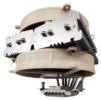
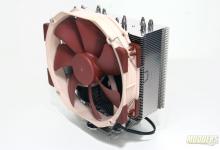

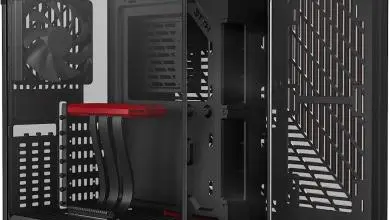
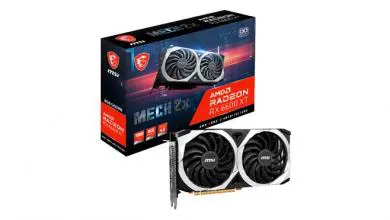
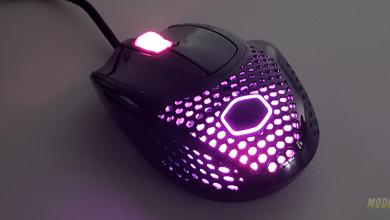
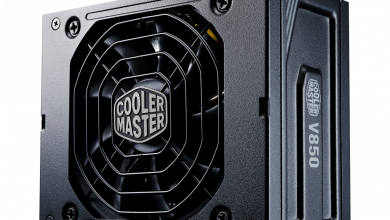
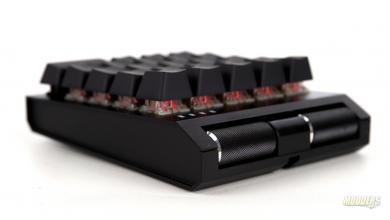

Hi Ron, I too have a 9590, but it was apparently bundled with a slightly different cooler when AMD first released them last year. The fans are a different manufacturer, and I believe that they have slightly lower max airflow (somewhere in the 60cfm range IIRC). Doesnt matter anyways—at max they are WAYYYY too loud for any sane person to stand for very long.
As for you trying to keep the CPU under 60C, you should pat yourself on the back for even getting close to that. Even undervolting the 9590 at 4.7 (turbo off) 1.425V, running prime95 (max heat/power consumption/8 cores) for an hour would put me in the mid 60s. In my experience, the chip remains stable up to somewhere in the high 70s, believe it or not. And I’ve gotten the chip stable at 5ghz (no turbo), but it is right on the very edge of running too hot to be stable. Very little oc’ing headroom like you stated.
Thanks for the insight Pat. I did not know about the different fans in the first revision. I would definitely suggest something beefier for cooling such as custom loop to run this chip. The fans are just too damn loud.